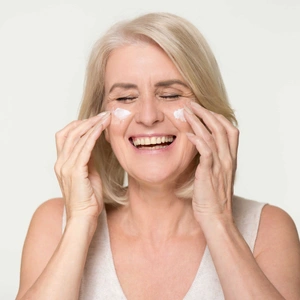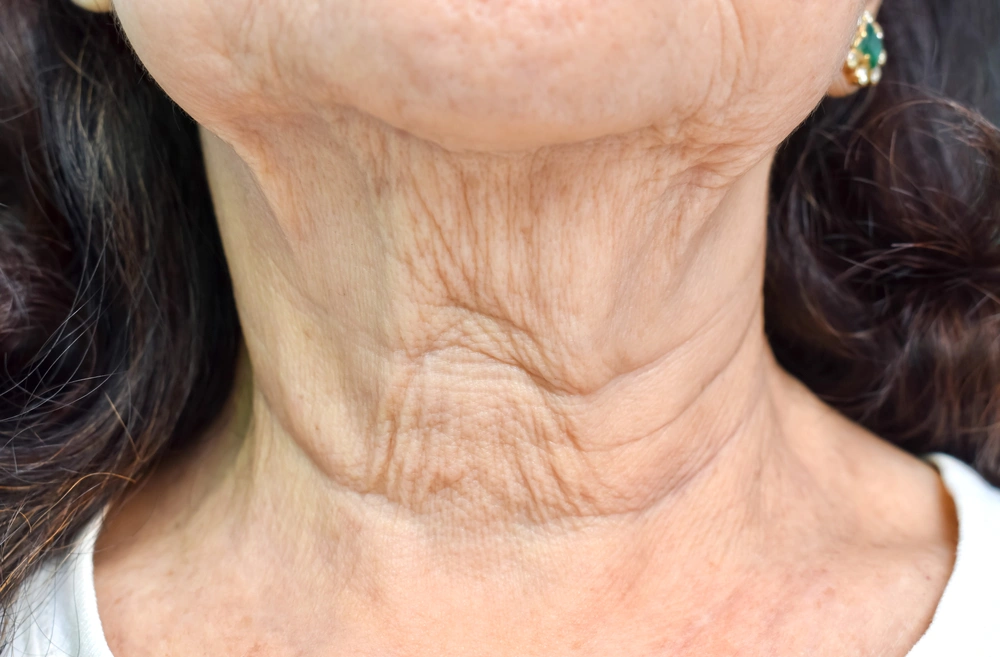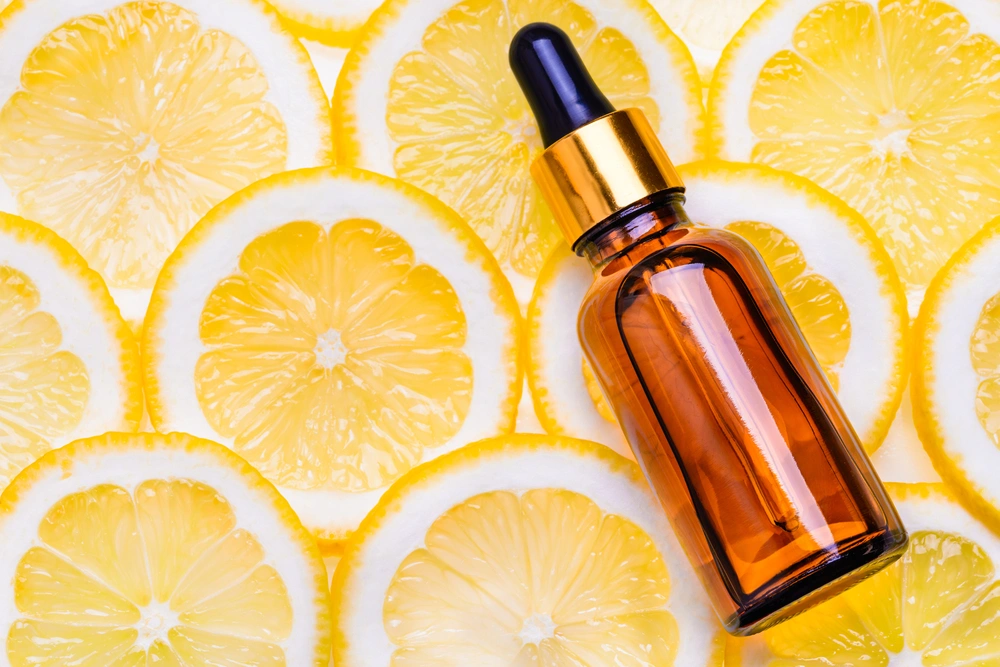Blog
Welcome to FaceForward
Get the scoop on all things beauty, wellness, and skincare.

As we get older, sagging skin often seems to appear out of nowhere, especially in noticeable areas like the neck.
So-called “turkey neck” is a side-effect of aging skin that’s common among individuals over the age of 40. For good reason, it can make you feel self-conscious and frustrated.
In this article, we take a closer look at what turkey neck is and why it happens. We’ve also included a few suggestions for aesthetic and at-home turkey neck treatments to help you achieve firmer skin.
|
Summary
|
As we get older, the skin around the neck becomes wrinkled and starts to sag. This is a normal part of the natural aging process and is informally known as turkey neck.
The neck is often the first part of the body that shows signs of aging because it’s an area with little collagen. It also experiences frequent stretching and movement due to the frequency with which we turn our heads, expediting the appearance of sagging and wrinkling.
|
What Is Collagen? Collagen is a protein that helps the skin tissue maintain its structure. It also plays an important role in:
Although the body produces collagen naturally, this ability declines as we age. When this happens, the signs of aging become more apparent. |

As we age, the skin’s ability to produce collagen and elastin—two components of the skin structure that help to keep it firm, resilient, and smooth—starts to decline. This causes the skin to appear looser, with fine lines and wrinkles often becoming more obvious.
Turkey neck can also be caused by frequent exposure to UV radiation without proper sun protection. UV rays release unstable atoms called free radicals onto the skin. Free radicals can damage elastin fibers and cause them to break down more quickly.
Over time, the skin loses its ability to maintain firmness and starts to sag.
|
Why Does the Neck Age So Quickly? As mentioned before, the neck is the area of the body that contains the least amount of collagen. When the body starts to produce less collagen, areas like the neck are often the first to lose elasticity. This means that the neck will show other signs of aging—like fine lines and wrinkles—much quicker than other parts of the skin. The neck also appears to age more quickly because it’s often neglected in a skincare routine, missing out on targeted products that can help combat aging. |
Developing fine lines and wrinkles around the face and neck is a natural part of the aging process that can’t be avoided entirely.
However, the appearance of aging skin—like turkey neck—can be treated with a number of aesthetic procedures.
This is a noninvasive procedure that involves injecting neurotoxins into sagging neck skin.
These toxins are intended to cause a relaxing effect in the neck muscles by blocking the release of acetylcholine—a type of acid that causes smooth muscles to contract and the skin in the area to appear wrinkled.
When the injection causes the neck muscles to relax, any fine lines and wrinkles tend to become less visible, leaving the skin looking tighter and more firm.
Botox is designed to be a relatively safe procedure that doesn’t cause any adverse side effects. You also won’t need any recovery time after your injections or procedures.
Although botox effectively minimizes the appearance of sagging skin and turkey neck, the results don’t last forever.
You may need to schedule follow-up appointments every three to six months. For some, this may become time-consuming and expensive.

The hyo neck lift is designed to tighten the skin around the neck through a surgical procedure.
A physician will make two small incisions behind the ears and underneath the chin. Then special equipment is used to suck excess fat and tissue from the skin to reduce sagging.
This repositions the tissue and pulls the skin tight against the neck.
A neck lift may be a good option if you want longer-term results. If done correctly, a neck lift can last between 10 to 15 years.
After the procedure, some common side-effects include:
These side effects usually resolve on their own within a couple of weeks.
Laser treatment is a milder way to reduce the signs of turkey neck. Although these procedures are generally less invasive than surgery, they may not be as effective.
A laser is used to heat collagen fibers in the neck, prompting them to constrict and firm.
This can help minimize the appearance of sagging skin while reducing the appearance of fine lines and wrinkles. While the effects of laser treatment can last for several years, you may need to have more than one session before you’ll be able to see its effect.
It usually takes up to six months of treatment before results are visible.
Although aesthetic procedures typically deliver the most immediate and profound results, there are other ways to improve the appearance of turkey neck.
Nonsurgical treatments for turkey neck can be an effective option for people who don’t feel comfortable with aesthetic procedures.
As we age, neck muscles begin weakening and the skin starts to appear looser.
Neck exercises are intended to stimulate blood circulation in the area surrounding muscles, which can help tighten signs of turkey neck.
These exercises may also help improve the elasticity of the neck muscles and promote firmer skin. Here are a few that you can try:
A good skincare routine may be one of the most effective ways to treat a number of skin concerns, including turkey neck.
Including the right ingredients in your routine can help you reduce signs of aging that contribute to turkey neck, fine lines, wrinkles, and sagging skin.
Retinoids like tretinoin are derived from vitamin A—a micronutrient known for its anti-aging properties.
Retinoids are common ingredients in anti-aging skincare formulas because of their ability to stimulate the skin’s cell turnover process. This is when the skin produces new cells more quickly, helping to heal fine lines and push dead cells, oil, and dirt from the pores.
Not only is the skin’s cell turnover process essential for keeping the pores clear, but it also helps to minimize the appearance of aging skin.
|
How Retinoids Can Help Reduce Turkey Neck Retinoids can reduce the appearance of turkey neck by stimulating the production of new skin cells. Retinoids reveal a smoother layer of skin and heal fine lines, reducing the appearance of aging. The new skin cells may also make the skin around the neck appear firmer and more youthful. |
Hyaluronic acid is a substance our bodies naturally produce and is responsible for keeping the skin moisturized. It is a humectant, which means hyaluronic acid acts like a sponge to attract water to the skin.
Hyaluronic acid’s hydrating properties are intended to improve the appearance of sagging skin, creating a more youthful appearance.
This can also help tighten turkey neck. However, our body’s ability to produce hyaluronic acid declines as we age, which is why skincare formulas that contain hyaluronic acid can be so powerful when it comes to maintaining resilient skin.
|
How to Use Hyaluronic Acid to Treat Turkey Neck Hyaluronic acid is intended to keep the skin moisturized which may tighten sagging areas. To make the most out of hyaluronic acid, most dermatologists recommend choosing a cream or lotion containing this ingredient. Products like these stay on the skin longest, allowing hyaluronic acid molecules more time to hydrate and tighten the complexion. Studies show that products containing a 2% hyaluronic acid concentration may be the most effective at reducing signs of aging. |
Peptides are short amino acid chains that bond to form proteins and help support the skin’s overall structure. As a skincare ingredient, peptides have been linked to anti-aging properties that minimize fine lines and wrinkles.
When peptides bond, they can stimulate the production of collagen—an essential skin protein that helps to keep the skin firm and supple.
If the skin produces enough collagen, it may be able to repair damage and improve the appearance of wrinkles more effectively.
|
Why Are Peptides Useful for Treating Turkey Neck? Some peptides—called neuropeptides—can be used for their anti-aging properties. These work in a similar way to botox by relaxing muscles in the face. When we age, the muscles in our face start to contract and can contribute to the formation of fine lines, wrinkles, and sagging skin. However, when neuropeptides are applied, these muscles relax and the skin may appear smoother. Products containing neuropeptides can be applied to turkey neck skin to promote muscle relaxation and more youthful-looking skin. |
Alpha-hydroxy acids (AHAs) are exfoliants known for their ability to dissolve and remove impurities from the surface of the skin.
AHAs are gentler than some other exfoliants and is generally well tolerated by all skin types.
Common AHAs used in skincare are:
AHAs also help the skin shed dead cells and replace them with new ones. This can improve the appearance of a dull complexion that often makes sagging skin more noticeable.
AHAs may also improve the elasticity of the skin by fighting and eliminating free radicals that damage collagen fibers. Improved skin elasticity can help give you a smoother, tighter complexion.
|
Can AHAs Help Reduce the Appearance of Turkey Neck? AHAs can help the skin remove damaged or dead skin cells that contribute to the formation of sagging skin and turkey neck. When these cells are removed, the skin can replace them with newer, healthier ones. This helps to make side effects of aging—like turkey neck, fine lines, and wrinkles—appear less noticeable. |
Vitamin C is a potent antioxidant that’s important for maintaining the overall health of the skin and body.
As a skincare ingredient, vitamin C is intended to combat premature signs of aging due to free radical damage.
Free radicals are unstable atoms that can break down elastin fibers and contribute to sagging skin.
Vitamin C can neutralize these atoms to prevent them from wreaking havoc on the skin.
Like retinoids, vitamin C also stimulates the production of new skin cells to help remove damaged ones from the surface.
This can result in firmer and younger-looking skin. It can also help tighten turkey neck by improving the skin’s elasticity.
|
What Is the Best Way to Use Vitamin C When Treating Turkey Neck? For best results, it’s often recommended to use vitamin C in a serum. Serums can be formulated to contain higher concentrations of active ingredients which can make them more effective. This may also lead to quicker and more visible results. |
N-Acetyl Glucosamine is a form of niacinamide, sharing many of the same anti-aging properties.
These include:
Like niacinamide, N-Acetyl Glucosamine is derived from vitamin B—a micronutrient that’s essential to maintain the proper functioning of major organs, like the skin.
N-Acetyl Glucosamine is designed to increase collagen production, which helps loose skin to become firmer.
|
How N-Acetyl Glucosamine Can Help Reduce Turkey Neck N-Acetyl Glucosamine can improve the skin’s elasticity and firmness by stimulating the production of collagen. This is intended to promote a firmer and smoother complexion, helping to reduce the appearance of sagging skin. Turkey neck may also become less visible as N-Acetyl Glucosamine can help tighten the skin around the neck. |

Unhealthy lifestyle habits like smoking, not sleeping enough, and chronic stress can accelerate the aging process. These factors can limit the skin’s ability to repair damaged cells and fibers, causing premature signs of aging to appear quicker.
They can also prevent the skin from producing the anti-oxidants it needs to protect itself from external stressors like UV radiation and pollution.
Although some of these habits are unavoidable, try to incorporate the following into your daily routine:
Although the aging process is largely unavoidable, there are things you can do to support your skin and reduce the appearance of fine lines and wrinkles, including sagging skin known as turkey neck.
If you don’t want to go down the aesthetic route, fine-tuning your skincare routine is one of the most effective ways to achieve a youthful-looking complexion.
At Nava MD, we make it easier than ever to access products that can help you do just that, including personalized prescription formulas sent to your door.
Our range of prescription and over-the-counter products are formulated with a number of proven anti-aging ingredients including
Nava MD is like an online dermatologist, helping you get medical-grade formulas and proven ingredients without leaving home – and at a fraction of the cost (or hassle) of visiting a dermatologist in person.
Learn more and get started with powerful anti-acne and anti-aging formulas today by clicking here.
This article is intended for informational purposes only and should not be considered medical advice.
Consult a healthcare professional or call a doctor in the case of a medical emergency